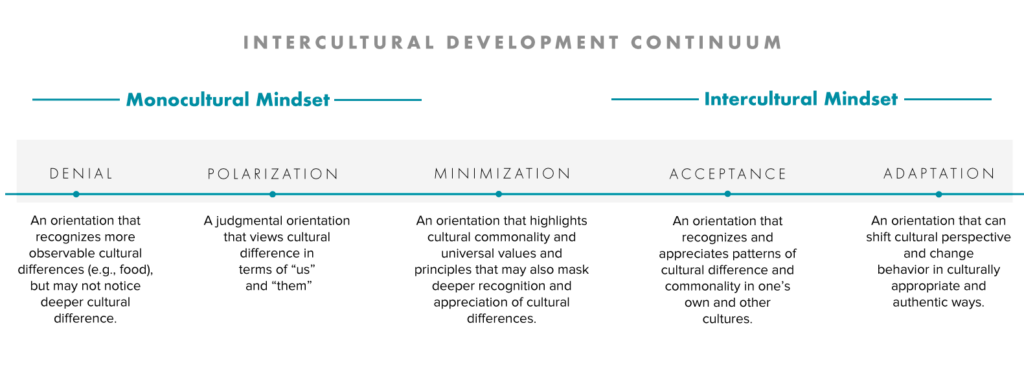Understanding and Effectively Managing Multicultural Teams
What is multiculturalism? What are the challenges faced by organizational leadership when it comes to leading and managing multicultural teams?
Businesses today find themselves at the crux of a critical cultural movement. An important distinction to note here is that this is a cultural movement and not a cultural shift – that happened decades ago. What we are seeing now is a theme of unravelling inevitabilities stemming from the neglect of a multicultural reality. In a 2016 report, the American Association of Colleges and Universities found that students of color represented 45.6% of all college graduates. Quite synergistically, diversity in a company’s workforce has been empirically linked to higher organizational trust, financial performance, employee satisfaction and innovation among many others. So, how can a business truly harness the awesome capabilities of a multicultural workforce? And more importantly, what is holding them back?
First and foremost, managing multicultural teams requires a multicultural mindset. Which sounds overly simplistic when stated that plainly. The complexities lie in understanding multiculturalism and holistically applying it from the perch of organizational leadership. A 6-person team research group, representing 16 nationalities and multiple professional backgrounds conducted research to define multiculturalism within individuals as “the degree to which they know, identify with, and internalize more than one culture”. Let’s break this down to its individual components:

Knowing culture – Truly knowing a culture runs a little deeper than book learning. It implies familiarity and comfort in another walk of life. Including an intimate understanding of the culture, social conventions, taboos, history, and fluency in the language. Learning through books, podcasts, or videos is a great starting point. Spending some time with a person of that culture, making observations, and asking insightful questions would be the next logical step.
Identifying with culture – Identifying with a culture implies a strong personal affinity. If someone uses an unfair stereotype to describe the culture you identify with, do you feel hurt, or offended; or do you feel personal pride when it’s praised? Answering those questions will help you understand if you feel like a culture is a part of you, an essential part of your identity.
Internalizing culture – Internalizing will inherently carry detailed knowledge and an essential identification with that culture. It also entails that culture being ingrained in your beliefs and value systems, a quintessential part of your nature. Most commonly, this will be the result of being raised in a culture. However, a little introspection into your beliefs might yield a different answer.
Understanding where you stand both personally and as an organization is critical to understanding the nature of the challenges that lay ahead. Like any team, managing multicultural teams will have its everyday challenges – and a little more on top of it.
The Challenges of Managing Multicultural Teams
It is important noting that multicultural teams empirically proving improvement in multi-dimensional performance is the outcome. This outcome is predicated on leadership overcoming the unique challenges that multicultural teams face. A study conducted by Kristin J. Behfar from The University of Virginia outlined these challenges and how to overcome them in order to better understand managing multicultural teams.
Hierarchy and Expectations – Certain cultures have an unwavering respect for leadership and tend to work differently when receiving a directive from a supervisor instead of themselves. Research conducted by the University of Southern California examined cultural differences in responses to leadership. They found that Chinese participants responded more strongly to directives from a leadership position as opposed to their American counterparts. Citing what they called the, “Boss Effect”.
Another study found that Americans show neural activity in reward-related brain regions in response to signals of dominance, while Japanese participants show neural activity in these same reward-related brain regions in response to signals of cooperation. This isn’t meant to state unilaterally that all American people or Japanese or Chinese people behave a certain way. What it does theorize, is that cultural differences in terms of their responsiveness to leadership have some degree of psychological and neurological traceability. Accepting that the many differences aren’t simply a choice that can be switched on and off is a first step. Understanding that the internalization of a culture is a deeply rooted process that has its strengths and challenges, is the next one. Understand how a culture can influence behavior and you will understand how to influence performance.
Pre-Existing Stigma and Prejudice – Incomplete knowledge or misinterpretations can creep into conversation as you get to know someone. This might occur in the hiring process or as you build a rapport with your team. This is common enough with people from the same cultural background. This tends to be compounded when the gaps in your knowledge make assumptions about someone’s culture. You may give a creative writing opportunity to a peppy extrovert without considering a quiet individual who speaks with an accent. Not because you have anything against multi-lingual introverts, purely because the brain connects the dots and makes quick decisions. Its human nature at the end of the day. Critically assessing smaller team decisions might implore you to learn more about your team. As a result, your lens is enhanced, thereby unlocking the hidden capabilities of your team.
Humor – Quintessential to developing a rapport is the use of humor. A study found that, in a classroom setting, professors who incorporated humor in their interpersonal approach were more likely to have higher success rates with students and scored significantly higher in terms of likeability. Unless you can identify with or have internalized a culture, understanding culture-specific humor will be difficult. Trying your own hand at culture specific humor, even more so. Even self-deprecating humor about your own culture can make the room uncomfortable or make it seem like a space where making fun of culture is okay. Over time, you will understand the boundaries better and the sense of comfort with a person will guide you. Don’t shy away from humor! Just be a little patient.
Different Communication Styles – In numerous instances, communication style can be attributed to culture. For example, in the US asking open ended questions can be seen as a sign of uncertainty. In the East, they are a sign of respect. Certain cultures have a higher chance of accepting inequality in the distribution of authority or power, which conversely makes them less likely to question a position of authority. Indian cultures’ reverence for the elderly can sometimes prove to be a barrier in questioning the judgement of someone older out of respect. Again, studies like these will never definitively state how people from various cultures will act, they simply provide the statistical basis to navigating through cross-cultural communication.
Overcoming the Challenges of Managing Multicultural Teams
We briefly touched upon how you can tackle these challenges. Now, we will dig into how that can be formally strategized. Becoming more knowledgeable about other cultures and asking insightful questions can make you a better team member. What about organizational leadership trying to connect with a 400+ multicultural team? That can be broken down into 400 individual cases and many intersections with valuable insight. Larger pools of people in multiple functions will require a sophisticated tool to handle all of that data and translate it into meaningful information. Those insights then need to be analyzed, communicated, and transformed into a plan of action.
Developing a Plan of Action
Understanding multiculturalism is the first step to harnessing it. The dynamics of it all can get quite complex when it comes to large organizations and their many intersections. The last decade or so of DE&I research has yielded an extensive body of work. Consequently, laying the foundation for tools that can, to some degree, translate these cultural intersections into data driven insights. One such tool is the Intercultural Development Inventory.
This theory-based, cross-culturally validated assessment is administered as a survey to each participant. Each person in an organization can provide unique insights. Mapping the many perspectives gives the tool multiple vantage points from which it can contextualize the cultural competence of your workforce. Thus, allowing you to understand where your organization stands on this scale:

Why Do It?
Reasons to invest in intercultural development vary. It may be circumstantial or even prompted by an initiative to improve conversations with customers. Here are some of the reasons organizations have cited for using the IDI:
- Social Obligation:
After culturally-impactful events (e.g. Death of George Floyd, Xenophobia against Asian Americans after COVID, etc.) we want to better understand how we communicate across differences (e.g. the impact of saying “all lives matters” vs. “black lives matter”, or “I don’t see color”), and create a development plan as an organization to embrace a multicultural mindset - Internal and External Communication:
We want to assess our abilities to manage and communicate across differences (Myers Briggs for Cultural Intelligence) - Practical & Actionable Insights:
We need help making cultural intelligence practical – you can take an individual assessment and get a debrief/action plan for you personally, a group assessment (e.g. HR department) and see how your team communicates/manages across differences, or organization wide – see how you as an organization manage across differences. - International Operations:
We’re a global organization and we want to be able to talk about cultural differences and adapt to cultural difference in a non-US specific context (using “culture” instead of terminology like “race” that may have different meanings in other cultures) - Customer Relations:
We have a culturally diverse customer-base and we want to make sure that we are communicating authentically across differences
How Does It Work?
The Intercultural Development Inventory is a 50-item questionnaire available online that can be completed in 15–20 minutes. It specifically assesses intercultural competence—the capability to shift cultural perspective and appropriately adapt behavior to cultural differences and commonalities. Available in 17 languages, the IDI will produce a customized organizational profile, drilling down into profiles for each group, sub-group, down to each participant.
When used to assess a group’s intercultural competence, interviews, or focus groups can be conducted to identify cross-cultural goals and challenges, providing valuable information regarding how the group’s IDI profile translates into interculturally competent strategies across diverse groups.
What Now?
Now that you have a sense for the level of cultural competence your organization has, you will need to set goals to address any shortcomings and advance any opportunities. The IDI has high predictive validity to both bottom-line cross-cultural outcomes in organizations and intercultural goal accomplishments.
The IDI has been psychometrically tested and found to possess strong validity and reliability across diverse cultural groups This validity includes predictive validity that has been tested in corporate settings as well as in educational institutions. The IDI has been rigorously tested and has cross-cultural generalizability, both internationally and with domestic diversity. You can move forward knowing that the customer testimonials & case studies along with the abundant research will provide a reliable blueprint for success.
When it comes to sensitive internal matters, trusting the team you work with is essential to trusting the results of the analysis. Clarkston Consulting has certified professionals with experience and knowledge in the DE&I space. Additionally, Clarkston is a certified administrator of the IDI and can serve as a trusted partner to design and execute an initiative that assesses an individual, a group, or your entire organizations current intercultural mindset. We will conduct debrief sessions to review the assessment’s findings, and design programs furthering the development of a multicultural mindset. These programs prove advantageous in the ability to lead with diversity, equity, and inclusion in mind, manage diverse teams, and develop a common language for your organization. Exemplified by a 97% client satisfaction, over the last 2 decades, trust is at the crux of what we do.
Multiculturalism is an asset if you understand it, learn from it, and grow with it. A position of leadership provides a strategic vantage point to effect change that spans beyond quarterly reviews and routine HR presentations on DE&I. The time is now to make a generational impact, to build unwavering trust among teams that are more likely to be diverse than ever before. Clarkston Consulting is ready and equipped to help you along that path. Irrespective of the reasons that prompt any organizational initiatives, the challenges and the rewards that they will mostly find are, quite appropriately, just the same.



